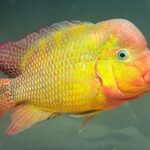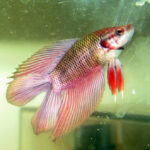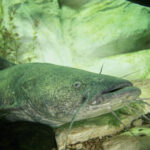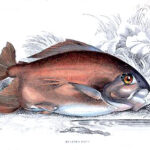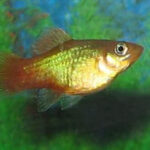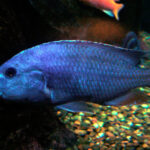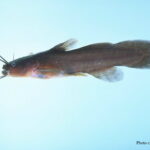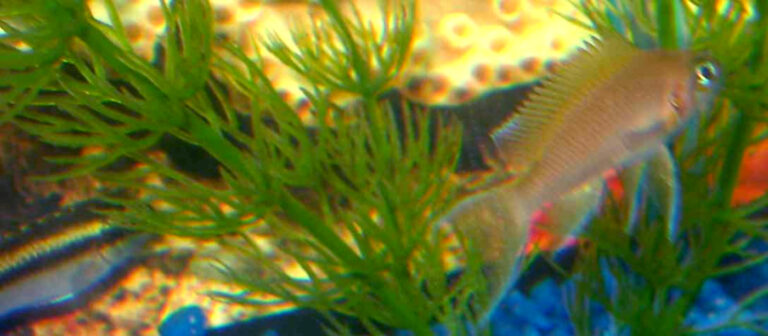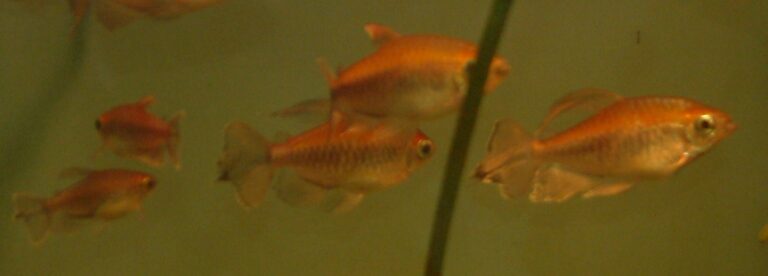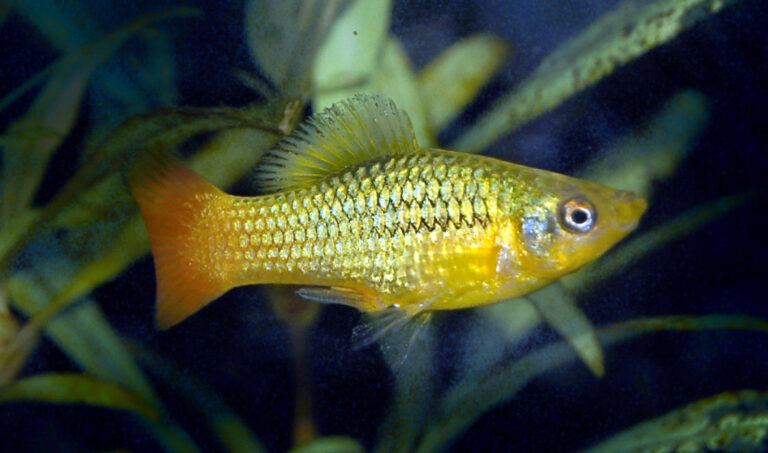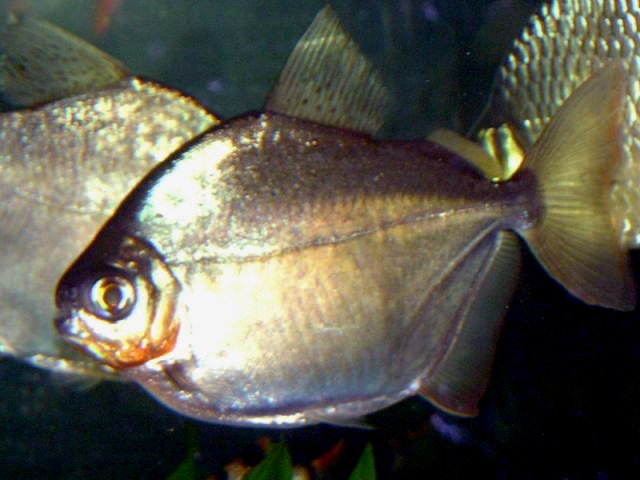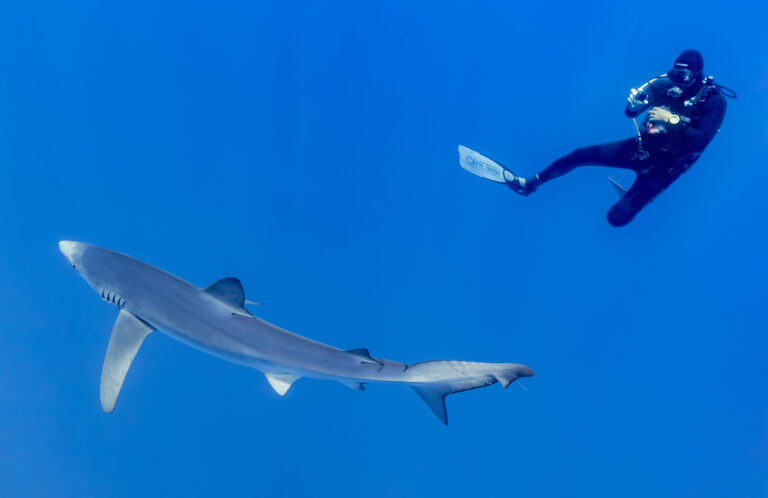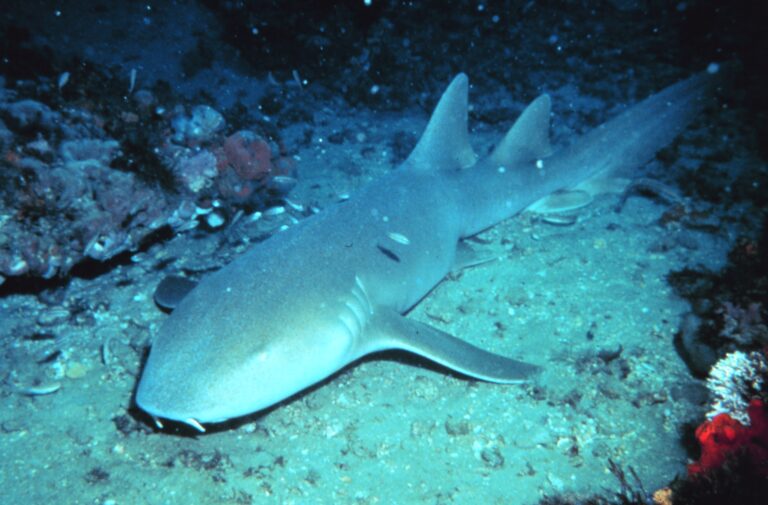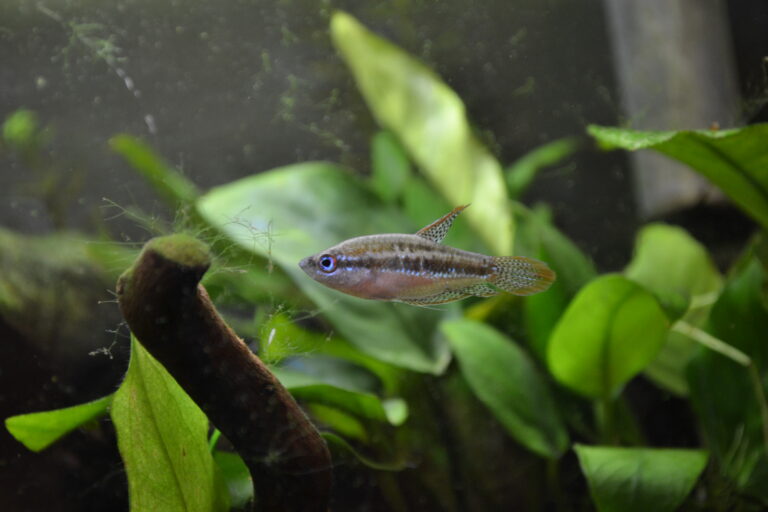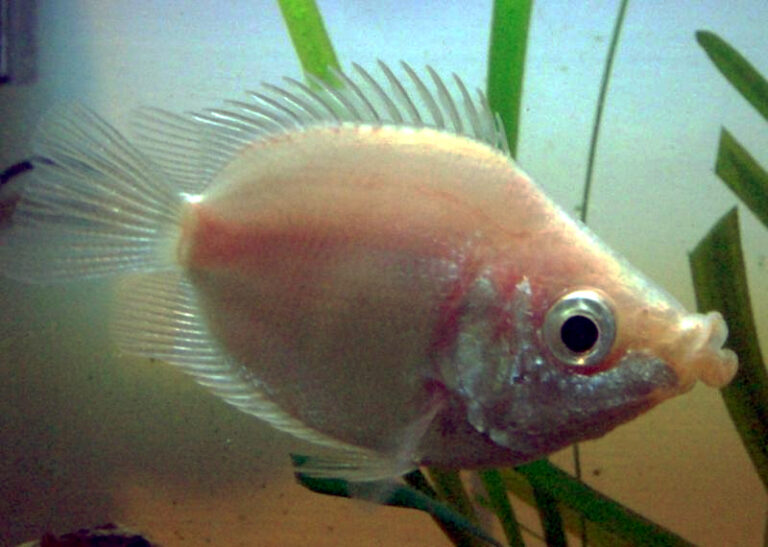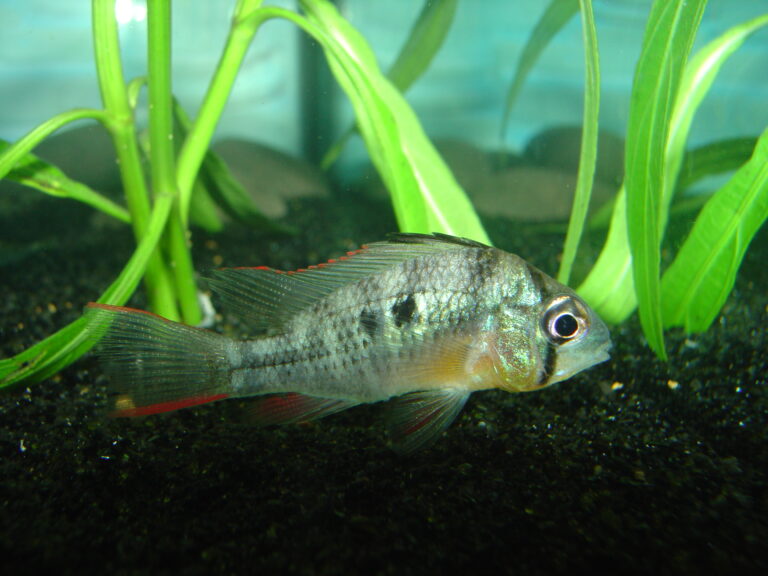Jack Dempsey Fish
By Ryan Maron | Last Modified: June 8, 2025

The Jack Dempsey Fish stands as one of Central America’s most distinctive cichlid species, captivating aquarists and researchers alike with its remarkable behavioral complexity and striking appearance. Named after the famous heavyweight boxer for its aggressive territorial nature, *Rocio octofasciata* represents a fascinating example of neotropical freshwater fish evolution and adaptation. This robust cichlid species plays a crucial ecological role as both predator and prey within its native aquatic ecosystems, helping maintain the delicate balance of fish populations in rivers and lakes throughout southern Mexico and Central America. The species serves as an important indicator of freshwater ecosystem health while supporting local subsistence fishing communities and maintaining significant cultural value in indigenous fishing traditions.
| Feature | Details |
| Common Name | Jack Dempsey Fish |
| Scientific Name | Rocio octofasciata |
| Family | Cichlidae |
| Typical Size | 20-25 cm (8-10 inches), 0.5-1.5 kg |
| Habitat | Freshwater rivers, lakes, slow-moving streams |
| Diet | Omnivorous – insects, crustaceans, plant matter |
| Distribution | Southern Mexico to Honduras |
| Conservation Status | Least Concern |
Taxonomy & Classification
The Jack Dempsey Fish belongs to the family Cichlidae, one of the most diverse fish families in the world with over 1,600 described species. Originally classified as *Cichlasoma octofasciatum* by Regan in 1903, the species underwent taxonomic revision in 2007 when it was reclassified under the genus *Rocio*. This reclassification reflected advances in molecular phylogenetic analysis that revealed distinct evolutionary lineages within the former *Cichlasoma* complex.
The species name *octofasciata* derives from Latin, meaning “eight-banded,” referring to the distinctive vertical bars that characterize juvenile specimens. Within the Cichlidae family, Jack Dempsey Fish represent the subfamily Cichlasomatinae, which encompasses most Central and South American cichlids. The genus *Rocio* currently contains only this single species, making it monotypic and highlighting its unique evolutionary position among neotropical cichlids.
Phylogenetic studies indicate that *Rocio octofasciata* diverged from closely related genera approximately 15-20 million years ago during the Miocene epoch. This evolutionary timeline coincides with major geological events in Central America, including the formation of the Isthmus of Panama, which significantly influenced freshwater fish distribution patterns throughout the region.
Physical Description
Adult Jack Dempsey Fish exhibit remarkable sexual dimorphism and dramatic color changes throughout their life cycle. Males typically reach 20-25 centimeters in length, while females remain slightly smaller at 18-22 centimeters. The species displays a laterally compressed, oval-shaped body typical of cichlids, with a pronounced forehead that becomes more prominent in mature males during breeding season.
Juvenile specimens showcase eight distinct dark vertical bars against a grayish-brown base coloration, earning them their scientific epithet. As fish mature, these bars fade and are replaced by an intricate pattern of iridescent blue-green spots scattered across the entire body and fins. Adult males develop more intense coloration, with electric blue spotting extending onto the unpaired fins and a distinctive nuchal hump that signals reproductive maturity.
The dorsal fin contains 16-17 spines followed by 11-13 soft rays, while the anal fin features 6-7 spines and 8-10 soft rays. These fin characteristics serve important taxonomic identification purposes and reflect the species’ predatory lifestyle. The caudal fin maintains a rounded to slightly truncated shape, providing efficient propulsion for quick bursts of speed during territorial disputes or prey capture.
Color morphs include the popular electric blue variety, which intensifies the natural iridescent spotting, and the less common gold form. These color variations result from selective breeding programs rather than natural genetic polymorphism, as wild populations maintain relatively consistent coloration patterns across their geographic range.
Habitat & Distribution
Jack Dempsey Fish inhabit freshwater systems throughout their native range, which extends from the Atlantic slope drainages of southern Mexico through Guatemala, Belize, and Honduras. The species demonstrates remarkable adaptability to diverse aquatic environments, including slow-moving rivers, oxbow lakes, cenotes, and artificial reservoirs created by human development activities.
Natural populations prefer areas with moderate water flow, abundant vegetation, and complex substrate compositions that provide shelter and spawning sites. Water temperature ranges from 22-28°C (72-82°F) throughout most of their range, with seasonal variations corresponding to regional wet and dry cycles. pH levels typically range from 6.5-7.5, reflecting the geological characteristics of Central American watersheds.
The species shows strong preferences for areas with fallen trees, rock formations, and dense aquatic vegetation that create territorial boundaries and refuge zones. These habitat features prove essential for successful reproduction and juvenile survival, as they provide protection from predators and abundant invertebrate prey populations.
Human activities have significantly impacted natural Jack Dempsey Fish populations through habitat modification, dam construction, and water pollution. However, the species has also established populations in artificial environments, including farm ponds, irrigation canals, and urban waterways where water quality remains suitable for survival and reproduction.
Climate change effects on Central American freshwater systems pose emerging challenges for native populations, as altered precipitation patterns and increased temperatures may exceed the species’ physiological tolerance limits in some portions of their historic range.
Diet & Feeding Behavior
Jack Dempsey Fish demonstrate opportunistic omnivorous feeding behavior that adapts to seasonal resource availability and habitat conditions. Their diet encompasses a diverse array of prey items, including aquatic insects, crustaceans, small fish, mollusks, and plant material. This dietary flexibility contributes significantly to their ecological success across varied freshwater environments.
Juvenile specimens primarily consume zooplankton, small invertebrates, and detritus, gradually incorporating larger prey items as they develop. Adult fish actively hunt for crayfish, freshwater shrimp, and small fish while also consuming significant quantities of algae and aquatic plant material. Their pharyngeal teeth are specially adapted for processing both animal and plant matter, allowing efficient extraction of nutrients from diverse food sources.
Feeding behavior patterns change dramatically during breeding season, when territorial males establish and defend feeding territories around optimal spawning sites. These territorial behaviors ensure adequate nutrition for reproductive females and developing offspring while reducing competition from conspecifics and other cichlid species sharing the same habitat.
The species exhibits interesting cooperative feeding behaviors during certain seasonal conditions, with multiple individuals working together to disturb substrate and expose buried invertebrates. This behavior pattern resembles strategies observed in other cichlid species and demonstrates the complex social intelligence that characterizes this fish family.
Prey capture techniques include ambush predation from cover, active pursuit of mobile prey, and systematic substrate excavation to locate burrowing invertebrates. These diverse hunting strategies reflect the species’ behavioral plasticity and contribute to their success in environments with varying prey density and composition.
Behavior & Adaptations
Jack Dempsey Fish exhibit complex social behaviors that reflect their evolutionary adaptation to competitive freshwater environments. The species demonstrates strong territorial instincts, particularly during breeding season when males establish and aggressively defend spawning territories. These territorial behaviors include ritualized threat displays, fin spreading, and direct physical confrontation with intruders.
Social hierarchy establishment occurs through a combination of size assessment, color intensity evaluation, and direct aggressive encounters. Dominant individuals maintain preferred feeding and shelter locations while subordinate fish occupy marginal habitats with reduced resource access. This social structure helps minimize energy expenditure on unnecessary conflicts while ensuring breeding opportunities for the most successful individuals.
The species possesses remarkable learning capabilities and memory retention, allowing them to recognize individual conspecifics, remember territory boundaries, and adapt hunting strategies based on previous experiences. These cognitive abilities prove essential for survival in complex freshwater ecosystems where resource distribution and predator presence change seasonally.
Communication mechanisms include visual displays using color changes and fin positioning, as well as low-frequency sound production during territorial disputes. The lateral line system provides sophisticated sensory capabilities for detecting water movement, pressure changes, and electrical fields generated by other fish species.
Physiological adaptations include enhanced oxygen extraction efficiency that allows survival in oxygen-depleted water conditions, particularly during dry season when water levels drop significantly. The species can also tolerate moderate salinity levels, enabling survival in brackish water areas where freshwater systems meet coastal influences.
Stress response behaviors include color darkening, reduced activity levels, and altered feeding patterns that help conserve energy during unfavorable environmental conditions. These adaptive responses contribute to the species’ resilience in habitats subject to seasonal variations and human disturbance.
Reproduction & Life Cycle
Jack Dempsey Fish reproduction follows a complex seasonal pattern tied to regional precipitation cycles and water temperature fluctuations. Breeding typically occurs during warmer months when water temperatures exceed 24°C and abundant food resources support successful offspring development. Sexual maturity occurs at approximately 6-8 months of age when fish reach 8-10 centimeters in length.
Pre-spawning behaviors include intensive territory establishment by males, who select and prepare spawning sites on flat surfaces such as rocks, logs, or cleared substrate areas. Males develop enhanced coloration and prominent nuchal humps during this period, serving as visual signals to attract females and deter competing males. Courtship rituals involve elaborate swimming displays, substrate cleaning activities, and gentle nudging behaviors between potential mates.
Females deposit between 500-1,500 adhesive eggs on prepared surfaces, with larger, older females producing greater numbers of offspring. Eggs measure approximately 1.5-2.0 millimeters in diameter and display a pale yellow to amber coloration. Both parents engage in biparental care, with males primarily defending territory while females focus on egg fanning and cleaning activities.
Incubation period ranges from 3-4 days depending on water temperature, with optimal development occurring at 26-28°C. Newly hatched larvae remain attached to spawning substrates for an additional 5-7 days while absorbing yolk sacs before becoming free-swimming fry. Parental protection continues for 4-6 weeks, during which adults guide fry to feeding areas and provide defense against predators.
Juvenile development progresses through distinct growth phases marked by color pattern changes and behavioral adaptations. Growth rates vary significantly based on temperature, food availability, and population density, with optimal conditions producing adult-sized fish within 12-18 months. The species can live 8-12 years in natural conditions, with reproductive capability maintained throughout most of their adult life span.
Predators & Threats
Jack Dempsey Fish face predation pressure from multiple sources throughout their life cycle, including both aquatic and terrestrial predators. Juvenile fish are particularly vulnerable to predation by larger cichlids, catfish species, and aquatic birds such as herons and kingfishers. Adult fish encounter fewer natural predators but remain susceptible to large predatory fish, caimans, and fishing activities by local human populations.
Habitat degradation represents the most significant long-term threat to wild populations, with deforestation, agricultural runoff, and urban development severely impacting water quality in many watersheds. Sedimentation from soil erosion reduces spawning success by covering preferred nesting substrates, while chemical pollutants affect reproductive development and immune system function.
Invasive species introduction poses an emerging threat in some regions, where non-native fish compete for resources or introduce diseases to which Jack Dempsey Fish have no evolved resistance. Climate change effects, including altered precipitation patterns and increased water temperatures, may exceed physiological tolerance limits and disrupt established breeding cycles.
Overfishing pressure exists in certain areas where the species supports subsistence fishing activities, though sustainable harvest levels vary significantly based on local population densities and environmental conditions. The aquarium trade has created additional pressure on wild populations, though most commercial specimens now come from captive breeding operations.
Water extraction for agricultural and municipal use reduces habitat availability and concentrates remaining fish populations in smaller areas, increasing competition and disease transmission rates. Dam construction fragments river systems and prevents natural migration patterns essential for genetic diversity maintenance.
Pollution from mining activities, particularly in Central American highland regions, introduces heavy metals and acid mine drainage that prove toxic to fish populations and disrupt aquatic food webs that support Jack Dempsey Fish populations.
Conservation Status
The International Union for Conservation of Nature currently classifies Jack Dempsey Fish as Least Concern, reflecting their relatively stable populations and wide geographic distribution throughout Central America. However, this classification masks significant regional variations in population health and habitat quality that warrant continued monitoring and conservation attention.
Population assessments conducted by regional fisheries agencies indicate declining numbers in heavily developed watersheds, particularly around urban centers where water pollution and habitat modification have intensified. Conversely, populations in protected areas and remote regions remain relatively stable, suggesting that habitat protection represents the most effective conservation strategy for maintaining long-term species viability.
Conservation efforts focus primarily on watershed protection and water quality maintenance rather than species-specific interventions. Several Central American countries have established freshwater protected areas that encompass critical Jack Dempsey Fish habitat, though enforcement of protection measures varies significantly between regions and political jurisdictions.
The species benefits from its popularity in the aquarium trade, which has led to extensive captive breeding programs that maintain genetic diversity and reduce pressure on wild populations. These breeding programs also serve as genetic repositories that could support population restoration efforts if wild populations experience significant declines.
Research priorities include population monitoring in key watersheds, habitat restoration techniques, and climate change impact assessment to inform adaptive management strategies. Collaborative efforts between government agencies, conservation organizations, and local communities prove essential for implementing effective protection measures across the species’ range.
Education programs targeting local fishing communities and aquarium hobbyists help promote sustainable practices and raise awareness about the ecological importance of maintaining healthy freshwater ecosystems that support Jack Dempsey Fish and associated species diversity.
Human Interaction
Jack Dempsey Fish have maintained significant cultural and economic relationships with human populations throughout their native range for centuries. Indigenous communities traditionally harvested the species as a protein source, developing sustainable fishing techniques that maintained population stability while supporting local nutritional needs. These traditional fishing methods continue in many rural areas, though modern fishing pressure has intensified in some regions.
The aquarium trade represents the most significant modern human interaction with Jack Dempsey Fish, with the species ranking among the most popular cichlids in the international ornamental fish market. This popularity stems from their attractive coloration, interesting behaviors, and relative ease of captive breeding. Commercial breeding operations now supply most aquarium specimens, reducing pressure on wild populations while supporting rural economic development in producing countries.
Scientific research applications include behavioral studies, aquaculture development, and ecological monitoring programs that utilize Jack Dempsey Fish as indicator species for freshwater ecosystem health. Their sensitivity to water quality changes makes them valuable tools for assessing environmental impact and monitoring pollution levels in Central American watersheds.
Educational programs in schools and public aquariums frequently feature Jack Dempsey Fish to teach about cichlid behavior, freshwater ecology, and conservation issues. Their engaging personalities and striking appearance make them effective ambassadors for freshwater conservation awareness and scientific education initiatives.
Agricultural interactions occur where fish populations inhabit irrigation systems and farm ponds, sometimes providing biological control of pest insects while occasionally competing with desired fish species. Fishing techniques used to harvest Jack Dempsey Fish vary from traditional hook and line methods to modern netting approaches, with success rates depending on seasonal behavior patterns and habitat characteristics.
Interesting Facts
Jack Dempsey Fish possess remarkable problem-solving abilities that rival those of much larger vertebrates, demonstrating tool use behaviors when manipulating substrate materials to access buried prey items. Research has documented individuals using small rocks and plant material to create water currents that expose hidden invertebrates, behavior previously thought to be limited to more advanced vertebrate species.
The species exhibits fascinating color-changing capabilities that extend beyond basic stress responses, with individuals able to rapidly alter their coloration patterns for camouflage, communication, and thermoregulation purposes. These color changes occur within seconds and involve complex interactions between chromatophores, nervous system signals, and hormonal influences.
Parental care behaviors include sophisticated offspring recognition systems that allow parents to distinguish their own fry from those of other fish species, even in mixed-species environments where multiple cichlid species spawn simultaneously. This recognition ability prevents misdirected parental investment and ensures optimal care for genetic offspring.
The species demonstrates remarkable longevity in captive environments, with documented lifespans exceeding 15 years under optimal care conditions. This longevity, combined with their learning abilities, allows for the development of complex relationships with human caretakers and sophisticated behavioral adaptations to captive environments.
Jack Dempsey Fish have been successfully established in several locations outside their native range, including parts of the southern United States and Southeast Asia, where they have adapted to local environmental conditions while maintaining their distinctive behavioral characteristics. These establishment successes demonstrate the species’ remarkable adaptability and ecological flexibility.
Memory retention studies reveal that Jack Dempsey Fish can remember feeding schedules, recognize individual humans, and navigate complex spatial environments for periods extending several months. This cognitive capability exceeds that documented for many fish species and contributes to their popularity as interactive aquarium pets.
Frequently Asked Questions
How aggressive are Jack Dempsey Fish compared to other cichlid species?
Jack Dempsey Fish display moderate to high aggression levels typical of medium-sized Central American cichlids. Their territorial behavior intensifies during breeding season and in confined spaces, but they generally show less aggression than species like red devils or midas cichlids. Proper tank size and environmental enrichment significantly reduce aggressive behaviors in captive settings.
What water conditions do Jack Dempsey Fish require for optimal health?
Optimal water conditions include temperatures between 22-28°C (72-82°F), pH levels from 6.5-7.5, and moderate hardness levels. The species tolerates slight variations in water chemistry but requires stable conditions and excellent filtration to maintain health. Regular water changes and monitoring prevent stress-related health issues.
Can Jack Dempsey Fish be kept with other fish species?
Jack Dempsey Fish can coexist with appropriately sized tankmates that share similar water requirements and temperament levels. Suitable companions include other medium-sized Central American cichlids, larger catfish species, and robust schooling fish. Avoid keeping them with small, peaceful species or slow-moving fish that cannot escape aggressive interactions.
How can you distinguish between male and female Jack Dempsey Fish?
Adult males typically develop more intense coloration, prominent nuchal humps, and extended fin rays compared to females. Males also display more pointed anal and dorsal fin extensions, while females maintain rounder body profiles and generally smaller adult sizes. These differences become most pronounced during breeding condition when sexual dimorphism reaches peak expression.
Conclusion
Jack Dempsey Fish represent a remarkable example of neotropical cichlid evolution and adaptation, serving crucial ecological roles as both predator and prey species within Central American freshwater ecosystems. Their complex behaviors, striking appearance, and adaptability have made them valuable both scientifically and economically, while their conservation status remains stable due to protective habitat management and sustainable aquaculture practices that reduce pressure on wild populations.
Share The Article:
More Fish Species:
-
Kribensis Cichlid
The Kribensis Cichlid (Pelvicachromis pulcher) stands as one of West Africa’s most remarkable freshwater fish species, captivating aquarists and…
-
Congo Tetra
The Congo Tetra stands as one of Africa’s most remarkable freshwater fish species, captivating aquarists and ichthyologists alike with…
-
Variable Platyfish
The Variable Platyfish (Xiphophorus variatus) stands as one of the most widely recognized and ecologically significant freshwater fish species…
-
Black Neon Tetra
The Black Neon Tetra (Hyphessobrycon herbertaxelrodi) stands as one of the most distinctive freshwater fish species in the aquarium…
-
Silver Dollar Fish
The Silver Dollar Fish (*Metynnis argenteus*) stands as one of South America’s most recognizable freshwater species, renowned for its…
-
Blue Shark
The Blue Shark (Prionace glauca) represents one of the ocean’s most accomplished travelers, traversing entire ocean basins in epic…
Discover
-
Baja Sportfishing: Marlin, Tuna, and Dorado Tactics
The first time I ventured into Baja sportfishing waters, I did almost everything wrong. I chartered a boat out…
-
Michigan Fishing License 2025: Complete Cost & Requirements Guide
Ask any angler about the most frustrating part of fishing, and paperwork will likely rank right up there with…
-
Nurse Shark
The Nurse Shark (Ginglymostoma cirratum) stands as one of the most recognizable and ecologically significant bottom-dwelling sharks in tropical…
-
Pacific Northwest Salmon Fishing: Guide to Puget Sound and Columbia River
There’s something almost magical about the way Pacific Northwest salmon fight on the end of your line. I still…
-
Best Fishing Spots in Florida: Top Locations for 2025
Florida’s nickname as the “Fishing Capital of the World” isn’t just clever marketing. With over 7,700 lakes, 10,550 miles…
-
7 Unusual Ways to Catch Trout in Lakes (That Most Anglers Miss)
Chasing trout in lakes can be maddeningly difficult. Trust me, I’ve spent countless mornings staring at a dead rod…
Discover
-
Sparkling Gourami
The Sparkling Gourami represents one of the most captivating miniature freshwater species available to aquarium enthusiasts and serves as…
-
How to Set Up a Fishing Pole For Beginners
After three decades of teaching friends and family how to fish, I’ve learned that setting up a fishing pole…
-
Kissing Gourami
The Kissing Gourami (*Helostoma temminckii*) stands as one of the most distinctive and recognizable freshwater fish species in both…
-
7 Types of Fisheries You Should Know Before Casting Your Line
I’ve been fishing for over 30 years across all kinds of waters, and one thing I’ve noticed is how…
-
Bolivian Ram
The Bolivian Ram (Mikrogeophagus altispinosus) stands as one of South America’s most captivating cichlid species, representing a prime example…
-
7 Shark Fishing Tactics That Actually Work (Expert Guide)
Shark fishing remains one of those bucket-list experiences that separates casual anglers from the truly adventure-hungry. But here’s the…

